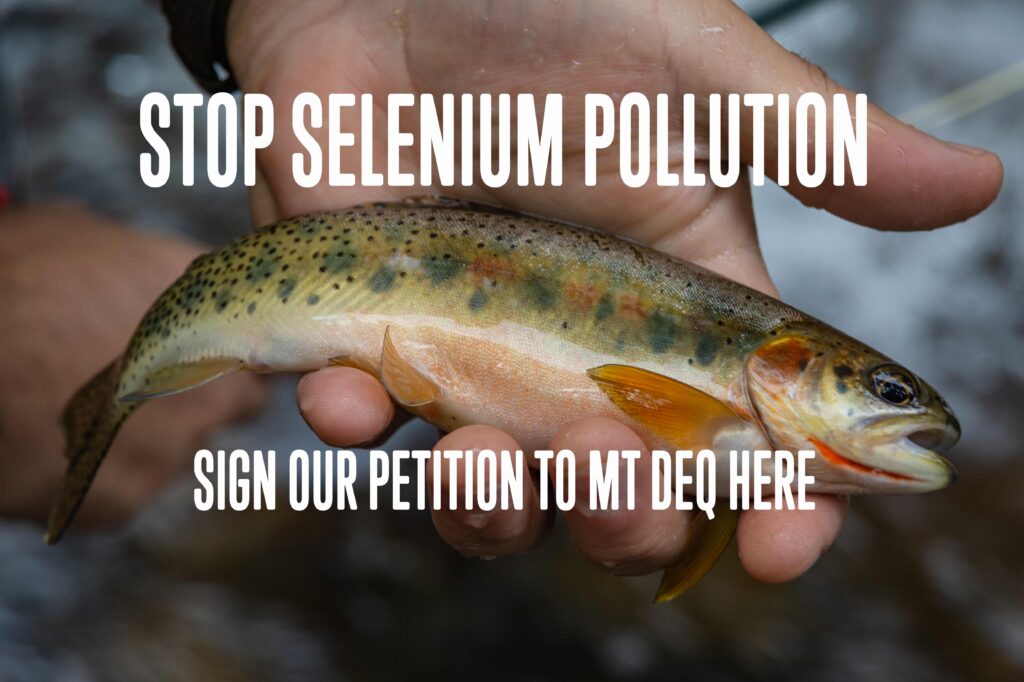Our efforts in the 2019 Montana Legislature paid off. Literally. This session we led sporting and conservation groups’ efforts to secure the most responsible fish and wildlife budgets that have passed the legislature in decades. Specifically, we restored cuts that important projects and agency divisions suffered in the last biennium.
MTU’s Clayton Elliott worked to assure that Fish, Wildlife and Parks’ (FWP) Fisheries Division has funding to fully staff its native fish program, including an additional full-time position. We got money returned to FWP’s stream gauge budget, as well as a first-ever investment in the department’s instream flow lease program. We helped bolster funding for FWP to complete drought management plans that will benefit fisheries statewide. Our work on HB2, the general budget bill, resulted in restoration of the state’s hatchery program, which was cut in 2017 leading to a 50% cut in the rainbow trout stocking in upper Missouri reservoirs. Plus we got $1.2 million for new state hatchery infrastructure that includes native trout cultivation for restoration work. The 2019 FWP budget includes additional money ($300,000) for acquiring fishing access sites (FAS) or paying for long-term FAS leases, which is on top of the $2.05 million we helped acquire for maintaining and enhancing current FAS. We helped repair a budgeting problem that required FWP’s enforcement staff to spend nearly a third of their time doing habitat work, rather than fisheries enforcement and FAS monitoring – their actual job.
Unfortunately, the legislature failed to see the value in restoring funding from the Smith River special revenue account to fund the Smith River ranger program, but we remain confident the department will be able to find resources for these critical positions during peak use. Similar to our work on FWP budgets, we helped ensure that the Department of Natural Resources and Conservation’s (DNRC) will get back its full funding for stream gauges that was cut in 2017, as well as its funding for implementing existing water compacts and managing water right permits or change applications.
Habitat Montana is a critical program that uses sportsman dollars to improve habitat and provide access for Montana’s hunters and anglers across the state. This 20-year old program has been an undeniable success for sportsmen, landowners, and our fish and wildlife resources. While past legislatures have made attempts to block or restrict how the agency uses these funds, we were able protect full spending authority of $8 million, meaning the agency will have the resources it needs to protect hundreds more acres over the next two years.
MTU works with our national organization, Trout Unlimited, on a number of restoration projects each year, including leading the effort to lobby the legislature in support of two critical funding sources – the Renewable Resources Grant and Loan Program and the Reclamation and Development Grant Program. This year, our partners in the Upper Clark Fork Program at TU applied for funding from those programs for three projects. We successfully shepherded those projects through the legislative process, resulting in $125,000 for the removal of the Rattlesnake Dam, $437,000 for the Ninemile Restoration Project, and $285,000 for the Silver King Mine Reclamation. Through these projects, TU will continue to employ dozens of local contractors, improve functionality for landowners and irrigators, and restore critical native fish habitat in the upper Clark Fork benefitting westslope cutthroat and bull trout.
If you’re a hunter or angler you will see a much-needed overhaul of the state’s Automated Licensing System (originally built in 1998) that will make it more user-friendly because of the legislative funding for technology upgrades.
As anglers, we will also continue to see a more robust aquatic invasive species (AIS) program because of our work this session. The successful AIS bill extends the program implemented by DNRC and FWP that mandates boat check stations, advanced monitoring of at-risk water bodies, and increased outreach to water users. The associated AIS funding bill reduced the fees on the angler AIS licenses for non-residents and youth anglers. It implements a new AIS prevention pass required for out-of-state watercraft, and an additional registration fee for new motorized, resident watercraft. Large hydropower facilities will continue to contribute to AIS prevention. MTU is proud of our work with a diverse coalition of stakeholders to help craft this balanced approach to funding that recognizes our shared concern for shared resources, and that proves we should all have some skin in the game. We are similarly encouraged by other budgetary successes that reflect our willingness and ability to work with diverse interests, one bill at a time. In total, MTU led the effort to secure over $40 million more than was appropriated in 2017 for Montana’s fish and wildlife resources and public access over the next two years.
Our policy work this session was a mix of pluses and minuses. We led the effort to protect FWP’s ability to own and lease instream flow rights for the purposes of fishery health. This has been a successful program for 30 years that allows willing water right owners to sell or lease their water to FWP as a willing buyer. We worked with partners to protect senior water rights and the Montana Water Use Act. In addition to restoring stream gauge funding, we helped move a bill that creates a new stream gauge oversight committee, including representation from nonprofit and government entities, which will help ensure these important water measurement tools remain funded into the future.
Lastly, there were no major rollbacks to the laws that protect our coldwater fisheries from the potential damages caused by irresponsible hard rock mining. MTU worked with partners to ensure that the laws, like the recently used “bad actor” provision, were protected by attacks from the mining industry and their legislative allies. The legislature did pass one bill, HB 722, dealing with the transfer of hard rock mining permits. We worked behind-the-scenes with the Department of Environmental Quality (DEQ) to ensure the bill has adequate sideboards to protect the taxpayers from unfair bond forfeiture and our waterways from potential pollution.
That’s a wrap from the 2019 legislature. If you have thoughts or questions, please feel free to contact Clayton Elliott (MTU) or Colin Cooney (TU), although after spending 90 long days in the Capitol, they might be gone fishing for a bit. Well deserved.





